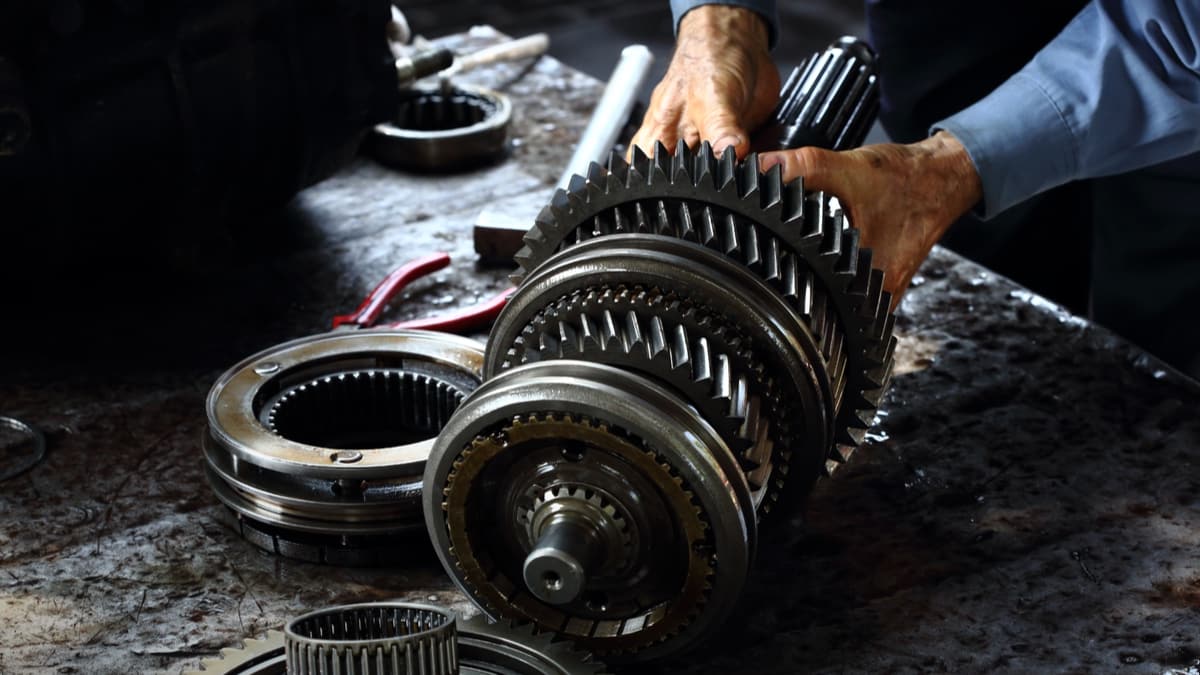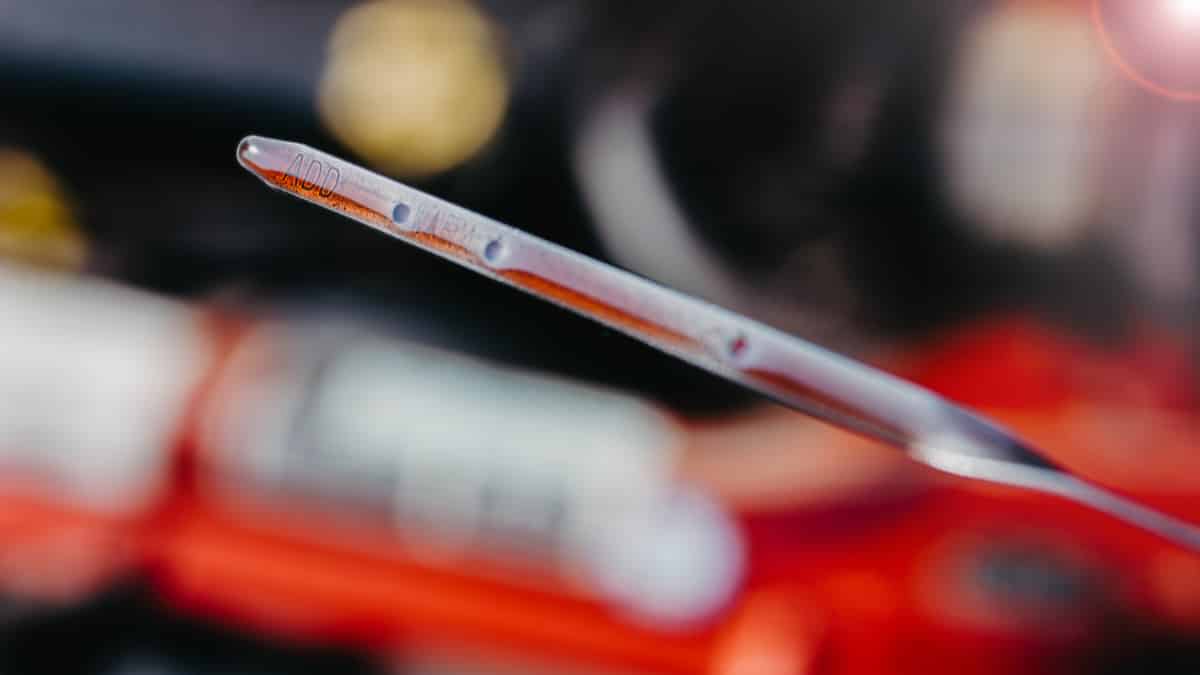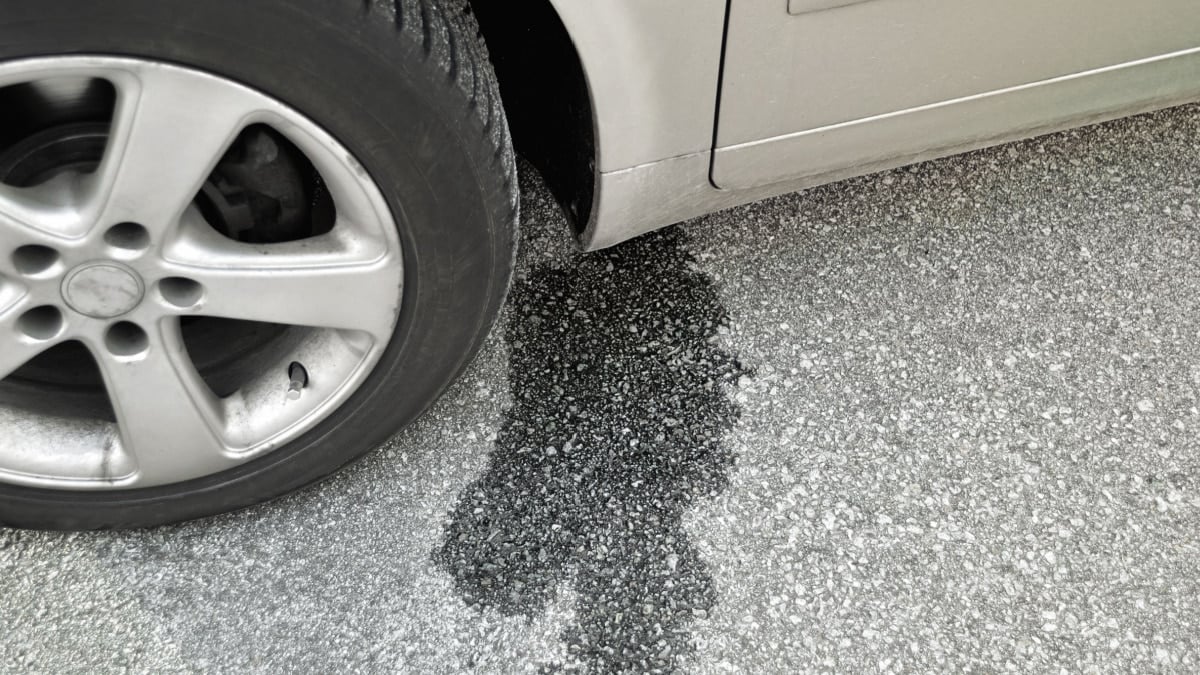If fluid is leaking from your car, you know it’s bad news. Other than some water dripping from the air conditioning, there should never be fluid coming from under the car. If your car has a transmission fluid leak, you want to take care of it before it causes damage to your vehicle.
In this guide, we discuss the most common causes of these fluid leaks. We also look at how to identify the leak and the cost to repair it. Before the article is over, you should have your top questions answered.
Common Causes of Transmission Fluid Leaks
Most often, the fluid is leaking from the transmission pan gasket or the drain plug. However, it can also come from a cracked or rusty transmission pan, hardened seals, damaged cooling lines or a failing torque converter. Only a visual inspection will determine where it’s coming from.
Let’s examine these options in-depth.
1. Transmission Pan Gasket

At the pan, there’s a gasket that keeps the fluid from leaking out. Over time, this gasket can deteriorate, especially when it’s exposed to a lot of heat.
If the gasket is mildly worn, the fluid may leak out in tiny bits, often known as seepage. However, the leak can get bad quickly, without warning.
2. Transmission Drain Plug

The transmission pan also contains a drain plug on most car models. It’s removed when performing a transmission fluid change or flush. The plug is pulled out to drain the old fluid. Then, the plug is put back in before you refill the system with fresh transmission fluid.
Over time, this plug can also fail, allowing fluid to seep through. The plug also fails if it has been over-tightened or gets stripped. For this reason, it’s important to take your vehicle to a qualified mechanic that understands how tight to secure the plug.
3. Cracked or Rusty Transmission Pan

The transmission plan is another component that’s normally durable. It can hold up to a lot of abuse, considering it is located underneath the car. As you drive, rocks can fly up and hit the pan, leaving cracks and damage behind.
Additionally, the transmission pan can rust over time. Either way, fluid can start to leak out of the pan. If the damage is severe, the transmission can lose all of its fluid within seconds, leaving you in a vulnerable position.
4. Hardened Seals
The transmission also contains several seals designed to keep the fluid in its place. These are just as important as the gasket, with a similar purpose. One of the most important seals is the output shaft seal.
While these seals are durable, they can dry out and harden after many years of use. When the seals dry, leaks can occur.
5. Damaged Cooling Lines
Transmissions have a cooler that operates like a radiator. It’s meant to lower the transmission fluid temperatures when they get too hot. Special lines take the hot fluid to and from the transmission cooler as needed.
However, time is the enemy to these parts too. The lines can break and degrade over time, leading to a transmission fluid leak.
6. Leaking Torque Converter

The automatic transmission has a torque converter installed. It’s responsible for disconnecting the transmission from the engine.
The torque converter holds a decent amount of transmission fluid. If the housing cracks or any of the seals fail, the fluid from the converter will start to leak out.
How to Identify a Transmission Fluid Leak

There are several ways to identify transmission fluid leaks. You don’t even need to be a mechanic to identify the leak.
- Look at the color of the fluid. Most times, transmission fluid is red. If the fluid is old, it could also be a brownish color. Just be careful because some other fluids can also be red, such as windshield washer fluid and antifreeze.
- Look at the consistency of the fluid. It’s going to be slick, almost oily to the touch. It’s similar to the consistency of brake fluid or oil.
- Examine the smell of the fluid. It’s going to be similar to petroleum. If it has a burnt smell, it’s time to change the fluid.
- Look at where the fluid is dripping from. You can place cardboard under the car to pinpoint where the leak is coming from. Most likely, if the red fluid is pooling near the front or middle of the vehicle, it’s transmission fluid.
In addition to these tips, you should also pay attention to how the car is running. If you are noticing trouble with the transmission, such as issues with gear shifts and sluggish responses, you may have a transmission leak. Remember to check the dipstick levels and add more transmission fluid if needed.
Learn more: Car Leaking Fluid: Causes and How to Identify The Liquid
Can You Continue Driving With A Transmission Fluid Leak?
You should never drive your car with a transmission fluid leak. Even if it looks small now and you think you can keep up with it, the problem could quickly get much worse. If the system loses too much fluid, the transmission could sustain permanent damage. Considering the cost of a new transmission can be $2,000 or more, this isn’t something you want to face if you could have prevented it.
Additionally, if the transmission ceases to work normally while you are in the middle of driving, you could cause an accident. It’s far safer to pull over at the first sign of trouble and have your vehicle checked before driving any further.
RELATED: Transmission Fluid Leak When Parked – Causes And Fixes
How Much Does It Cost To Repair A Transmission Fluid Leak?

It’s difficult to estimate how much it would cost to have the transmission fluid leak repaired. There are several factors to consider, including the following:
- Year, make and model of vehicle
- Issue that needs to be repaired
- Where you take the vehicle for repair
- Labor rates in your region
- DIY vs. professional repair
To show you how wide of a range the cost can be, let’s look at some of the problems we’ve mentioned. Here are some estimates for repair that include both parts and labor.
- Transmission pan gasket: $200 to $750
- Transmission drain plug: $50 to $250
- Transmission pan: $250 to $850
- Transmission cooling lines: $100 to $350
- Torque converter: $350 to $1,000
If you can perform any of these repairs yourself, you will save money on the labor costs. It’s very important that you examine the low cost of these fixes versus what you spend if the transmission needs to be rebuilt or replaced. That should be reason enough for you to stop driving until you have the leak repaired.
Should I Use A “Stop Leak” Product To Fix the Leak?
Speaking of fixing a leak, many people are relying on stop leak products, especially Bar’s Transmission Stop Leak. For the price, you may be thinking about giving it a try, but does it work?
For the most part, these types of products aren’t generally recommended by mechanics such as us. However, we do agree that there are times when using it might be beneficial. The most valuable time to use this product is if the cost to repair your car costs more than its value. In that case, you may not be looking to keep the car anyway. You may be able to use a product to stop the leak temporarily while you hunt down a good deal on a new or used vehicle.
These products should never be used as a replacement for fixing the underlying issue. Only a repair that permanently stops the leak is ideal.
How serious is a transmission fluid leak?
If your car is leaking transmission fluid, you need to take it very seriously. Without the right amount of fluid, the transmission can start to wear and friction can occur among the internal parts. If you aren’t careful, the transmission can fail, leaving you with costly repair bills.
Where does transmission fluid usually leak?
When transmission fluid leaks, you can normally see it towards the front or middle of the car. It could be leaking from the pan gasket, drain plug, seal, cooler lines or the pan itself. By placing a piece of cardboard under the vehicle, you may be able to figure out exactly where it’s coming from.
What are the signs of a transmission leak?
You will see the red fluid dripping out from under the vehicle. The fluid level will also continue to drop even after you refill it. If the fluid gets low enough, you’ll start to experience some performance issues, such as rough shifting, slipping gears and an overheating transmission.
What happens if you drive with a transmission leak?
If the transmission fluid drops too low, it can cause serious mechanical failure. The gears will start to slip, you’ll notice rough shifting and the transmission could overheat. If not fixed immediately, you could ruin the transmission, which isn’t just a costly repair, but it also could leave you stranded.
With many automatic transmissions lasting more than 200,000 miles, it’s important that you take care of yours. In addition to following the recommended maintenance schedule for your transmission, it’s also important that you take care of any leaks as you see them. Your prompt attention could mean the difference between a $50 repair and a new transmission.
In our line of work, we can’t help but continue to tell people that prevention is far better than repair. If you take the time to protect your vehicle from wear now, it will repay you in the future with fewer repair bills and more miles on the odometer.
Categories: Transmission, Troubleshooting















